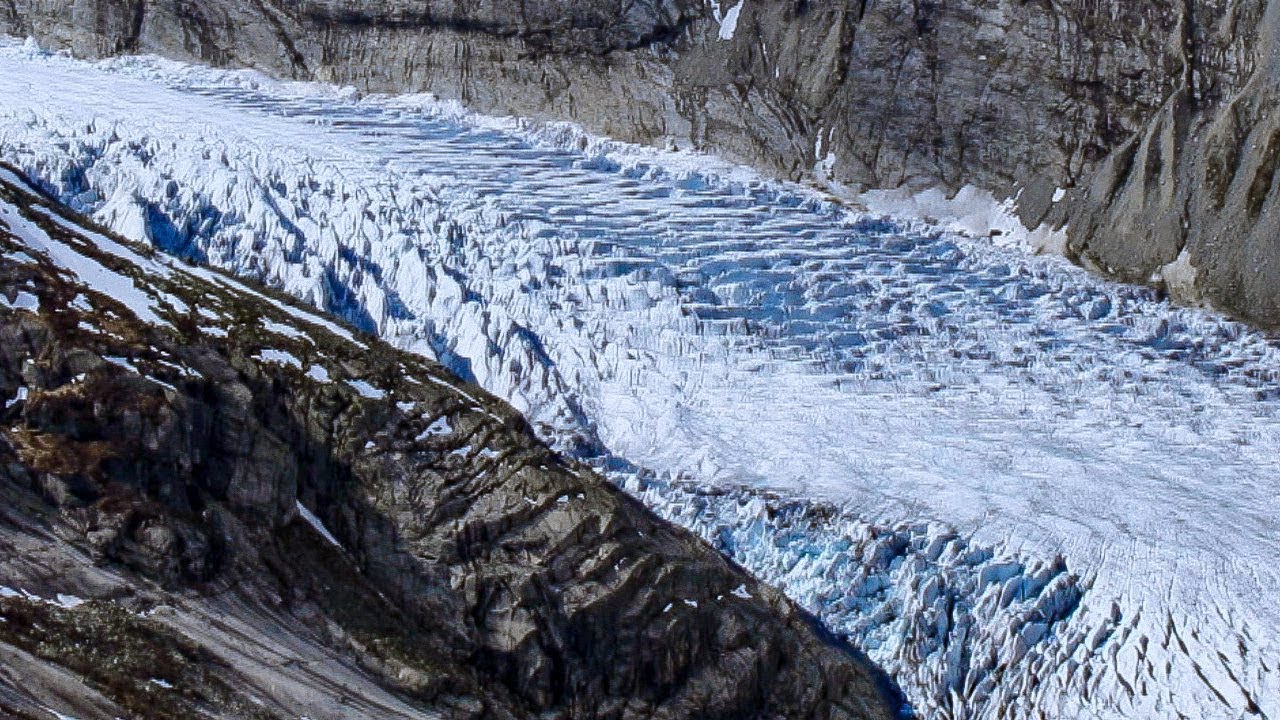
32 interesting facts about Glacial movement
- 👁️ 247
Glacial movement, a fascinating and complex natural process, plays a critical role in shaping the Earth’s landscapes. Glaciers, massive bodies of dense ice, are constantly on the move, driven by their own weight and the forces of gravity. This slow but unstoppable movement has profound effects on the planet, from carving out valleys and forming lakes to influencing global climate patterns. Understanding how glaciers move and change over time offers valuable insights into Earth’s past and future environmental conditions. Here are 32 interesting and informative facts about glacial movement that highlight its significance and complexity.
- Glaciers form when snow accumulates over time, compresses, and becomes dense ice.
- Glacial movement occurs primarily through two processes: internal deformation and basal sliding.
- Internal deformation is the flow of ice crystals within the glacier, rearranging due to gravity.
- Basal sliding happens when the glacier slides over the ground, lubricated by meltwater at its base.
- The speed of glacial movement can vary greatly, from a few centimeters to several meters per day.
- The fastest-moving glaciers are known as ice streams, some of which can move more than 1,000 meters annually.
- Glacial surges are short-lived events where glaciers can move tens of meters per day, dramatically faster than their usual pace.
- Creep is a slow movement of glaciers that occurs under the force of gravity without visible cracking or breaking.
- Crevasses are deep cracks that form in glaciers as they move and bend over uneven terrain.
- Glacial striations are scratches or gouges left on rocks and bedrock by moving glaciers.
- The zone of accumulation is where a glacier gains ice mass, primarily through snowfall.
- The zone of ablation is where the glacier loses ice mass due to melting and sublimation.
- The equilibrium line on a glacier marks the boundary between the zones of accumulation and ablation.
- A glacier’s terminus or snout is the lowest end of the glacier, where ice melts or calves off into bodies of water.
- Glacial till is the unsorted sediment deposited directly by a melting glacier.
- Moraines are accumulations of debris and sediment carried along and deposited by a glacier.
- Drumlin fields are landscapes of streamlined hills formed beneath glaciers or ice sheets.
- Eskers are long, winding ridges of sand and gravel formed by streams flowing underneath glaciers.
- Glacial movement has been responsible for the formation of many fjords, U-shaped valleys carved by glaciers.
- During the Last Glacial Maximum, glaciers covered about 30% of Earth’s land area.
- The Antarctic Ice Sheet, the largest single mass of ice on Earth, exhibits complex glacial movement.
- Isostatic rebound occurs when the Earth’s crust rises after being compressed by the massive weight of a glacier.
- Glacial meltwater contributes to sea-level rise, a significant concern due to global warming.
- The process of calving, where icebergs break off from glaciers, is influenced by the glacier’s movement.
- Glaciers store about 75% of the world’s freshwater.
- The Greenland Ice Sheet is experiencing some of the fastest glacial movements due to climate change.
- Ice ages are periods of time when glaciers advance due to lower temperatures, affecting glacial movement globally.
- Glacial flour, finely ground rock created by glacial movement, can give lakes and rivers a distinctive turquoise color.
- Surge-type glaciers experience periodic surges in movement interspersed with longer periods of little to no movement.
- GPS and satellite imagery are modern tools used to measure and monitor glacial movement accurately.
- The study of glacial movement helps scientists understand past climate conditions and predict future changes.
- Human activities, especially those contributing to climate change, are significantly affecting glacial movement and stability.
Glacial movement is a powerful force that shapes our planet in profound ways. From creating stunning landscapes and contributing to the global water cycle to influencing climate patterns, glaciers play an essential role in Earth’s system. As scientists continue to study and understand the nuances of glacial movement, it becomes increasingly clear how interconnected our world is and how important it is to protect these icy giants. The ongoing study of glaciers not only broadens our knowledge of the natural world but also informs efforts to mitigate the impacts of climate change.
Glacial movement, a fascinating and complex natural process, plays a critical role in shaping the Earth’s landscapes. Glaciers, massive bodies of dense ice, are constantly on the move, driven by their own weight and the forces of gravity. This slow but unstoppable movement has profound effects on the planet, from…